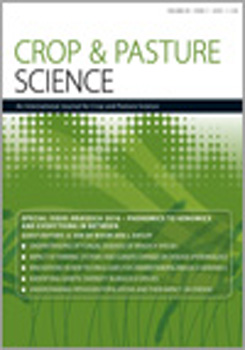Blackleg, caused by Leptosphaeria maculans, is the main disease constraint for canola production in Australia. The fungus infects all aboveground and belowground parts of the canola plant. Yield loss in Australia and worldwide is generally associated with cankers at the crown, which arise from leaf infections during the early stages of seedling growth. Infection of flowers, peduncles, siliques, main stems and branches, with resultant lesions and canker formation, are typically uncommon symptoms. We propose the term ‘upper canopy infection’ to encompass symptoms on all of these plant parts because they generally occur together on the same plant and appear after the plant has undergone elongation. Branch and stem lesions observed in a commercial crop in 2010 were confirmed as L. maculans. Since then, assessment of upper canopy symptoms at 25 sites across the canola-producing regions of Australia between 2011 and 2016 show that symptoms are more prevalent, although they differed between sites and seasons. In 2011, symptoms were present at a single site, and this increased to seven sites in 2013 and 23 sites in 2016. Preliminary data indicate that infection arises from both ascospore and pycnidiospore inoculum, and that earlier onset of flowering is a key risk factor for more severe upper canopy infection. Evidence suggests that host genetic resistance may be an effective control for upper canopy infection.
How to translate text using browser tools
22 August 2017
Detection, prevalence and severity of upper canopy infection on mature Brassica napus plants caused by Leptosphaeria maculans in Australia
Susan J. Sprague,
Stephen J. Marcroft,
Kurt D. Lindbeck,
Andrew H. Ware,
Ravjit K. Khangura,
Angela P. Van de Wouw
ACCESS THE FULL ARTICLE

Crop and Pasture Science
Vol. 69 • No. 1
January 2018
Vol. 69 • No. 1
January 2018
flower infection
flowering time
Phoma
pod infection
rapeseed




